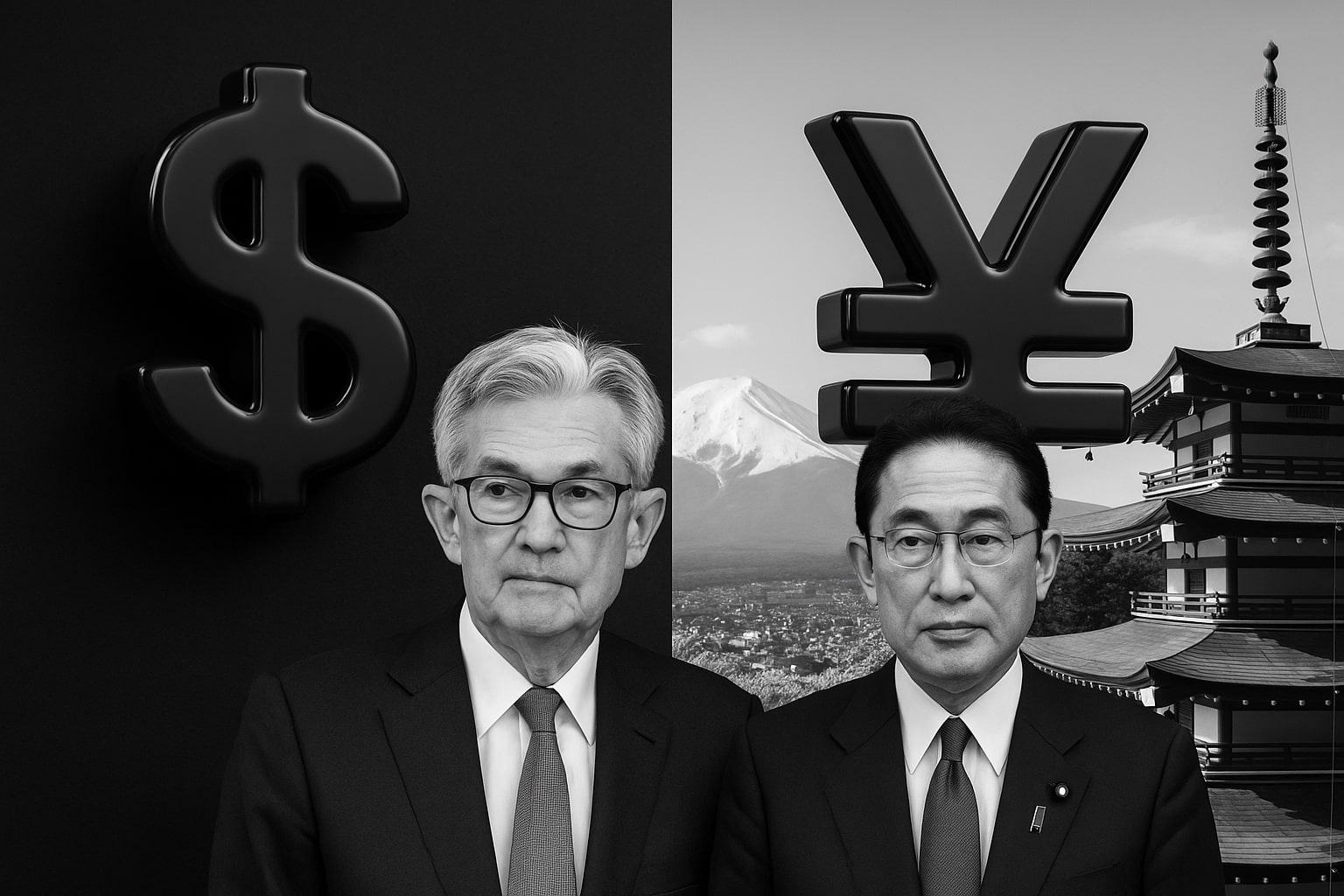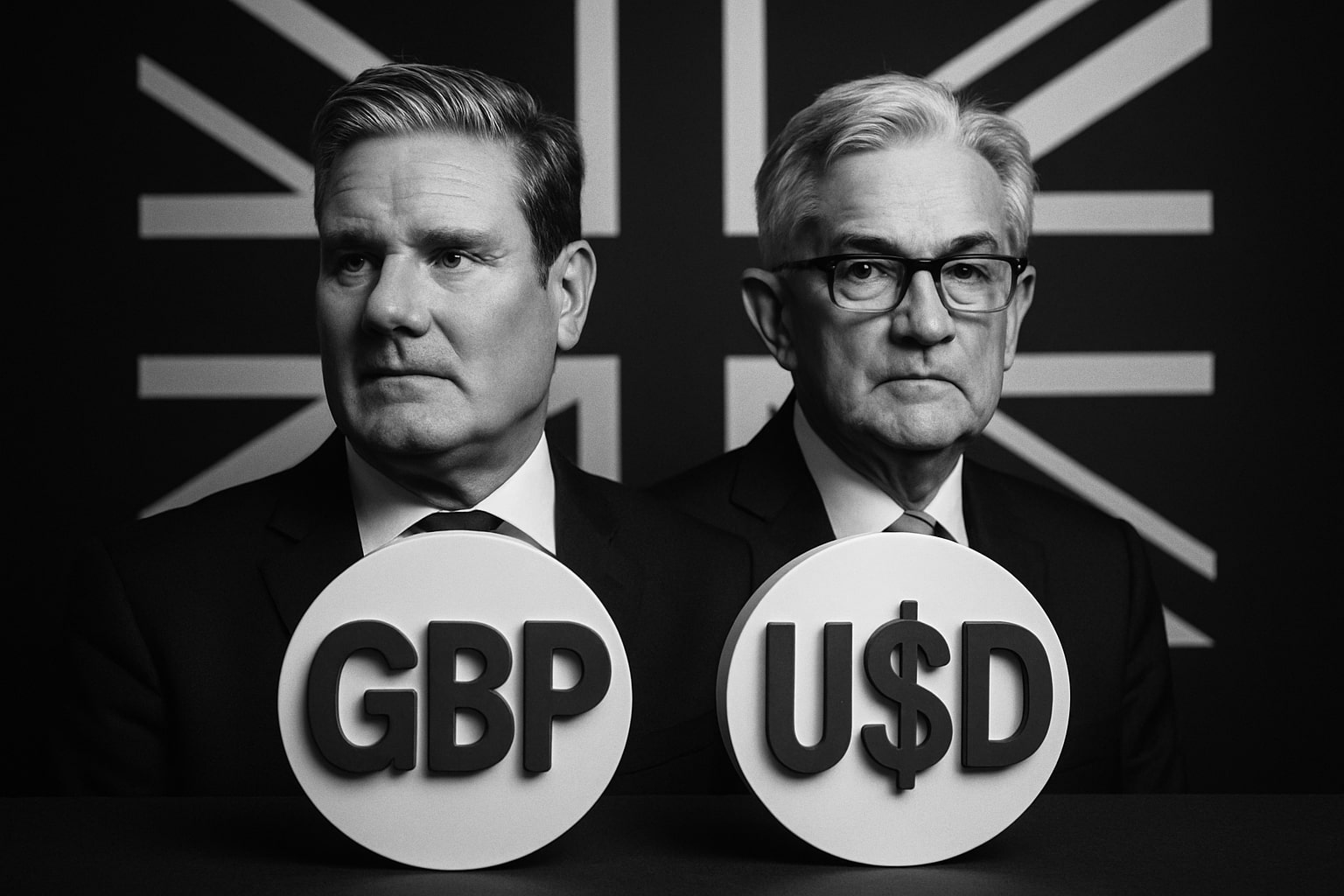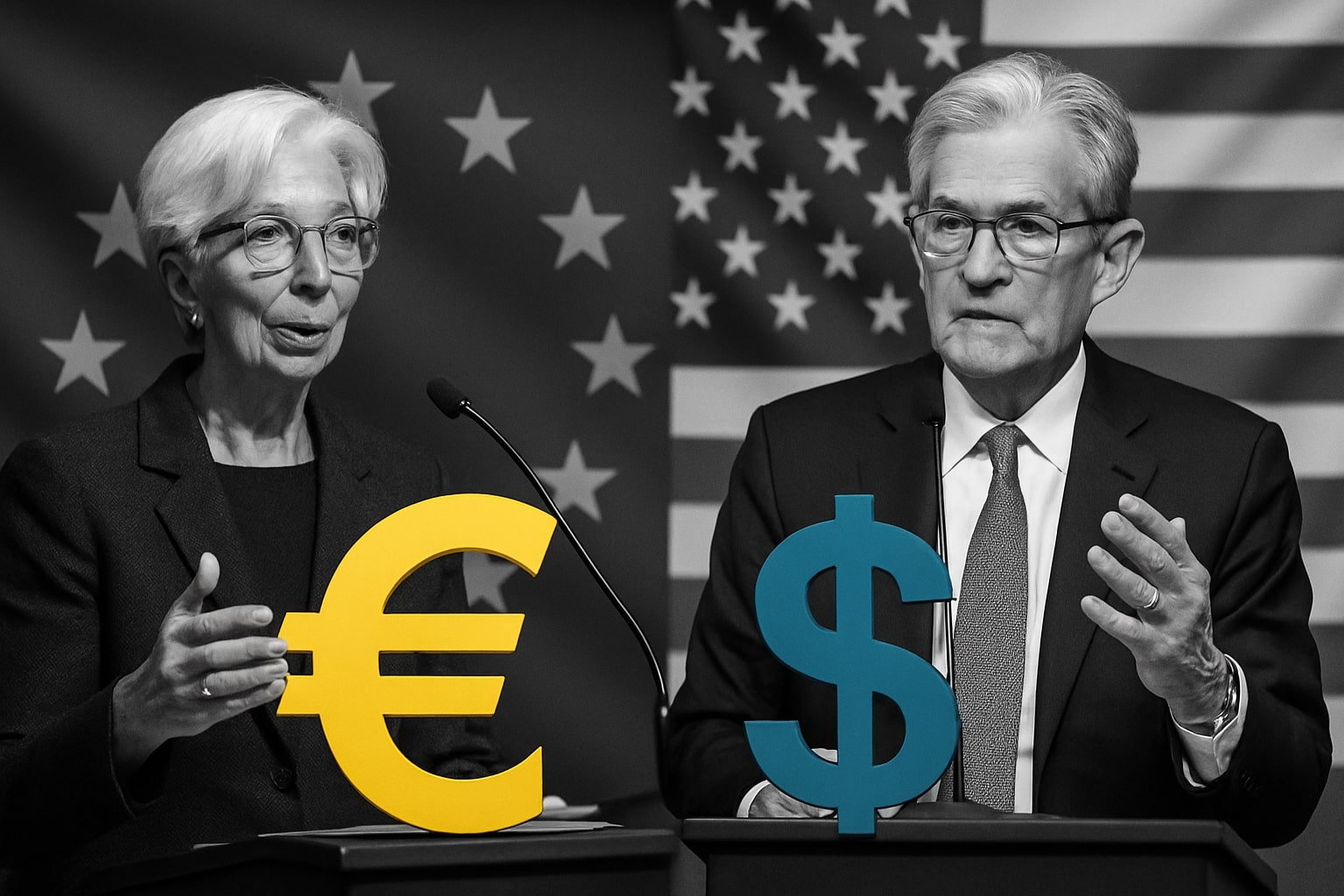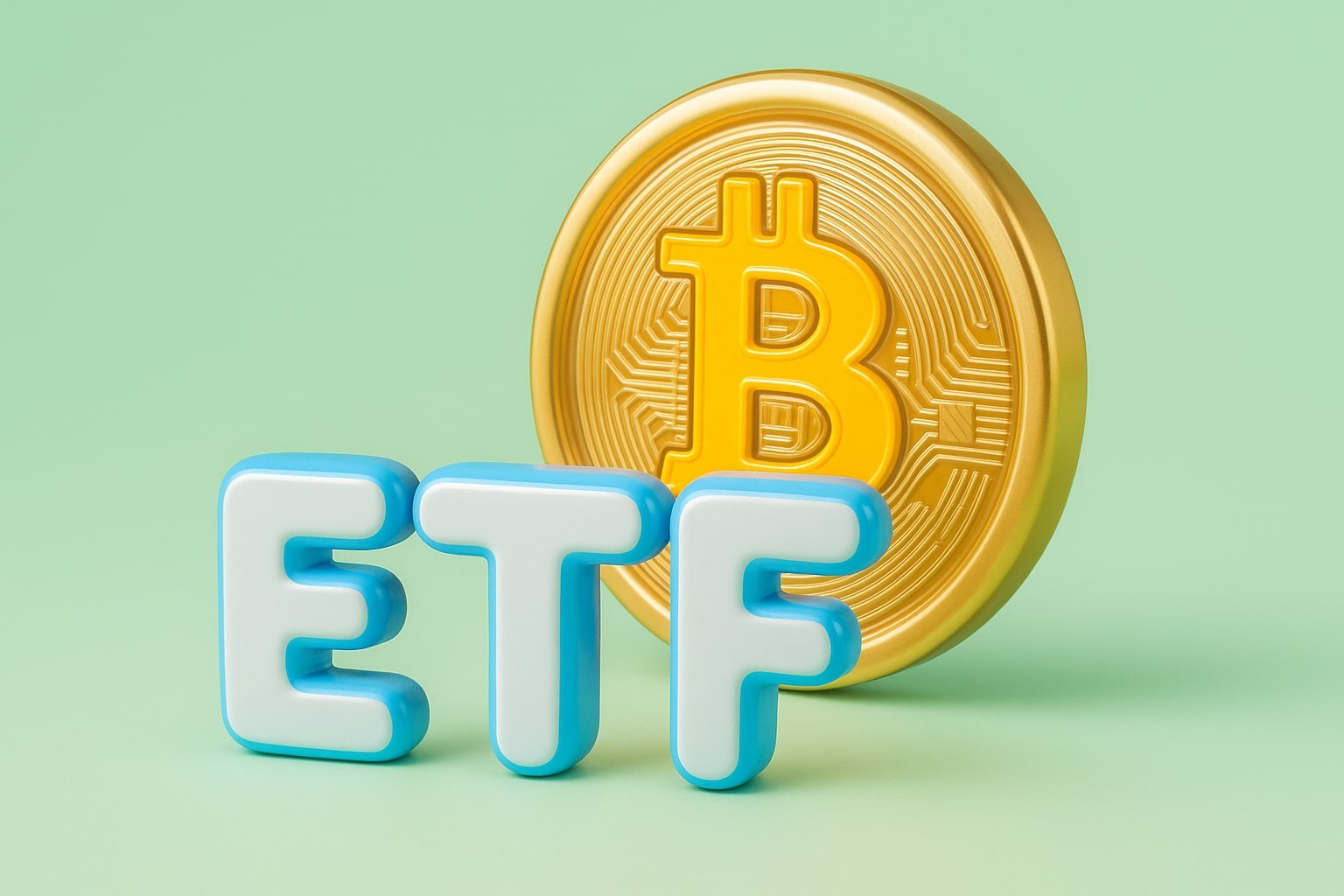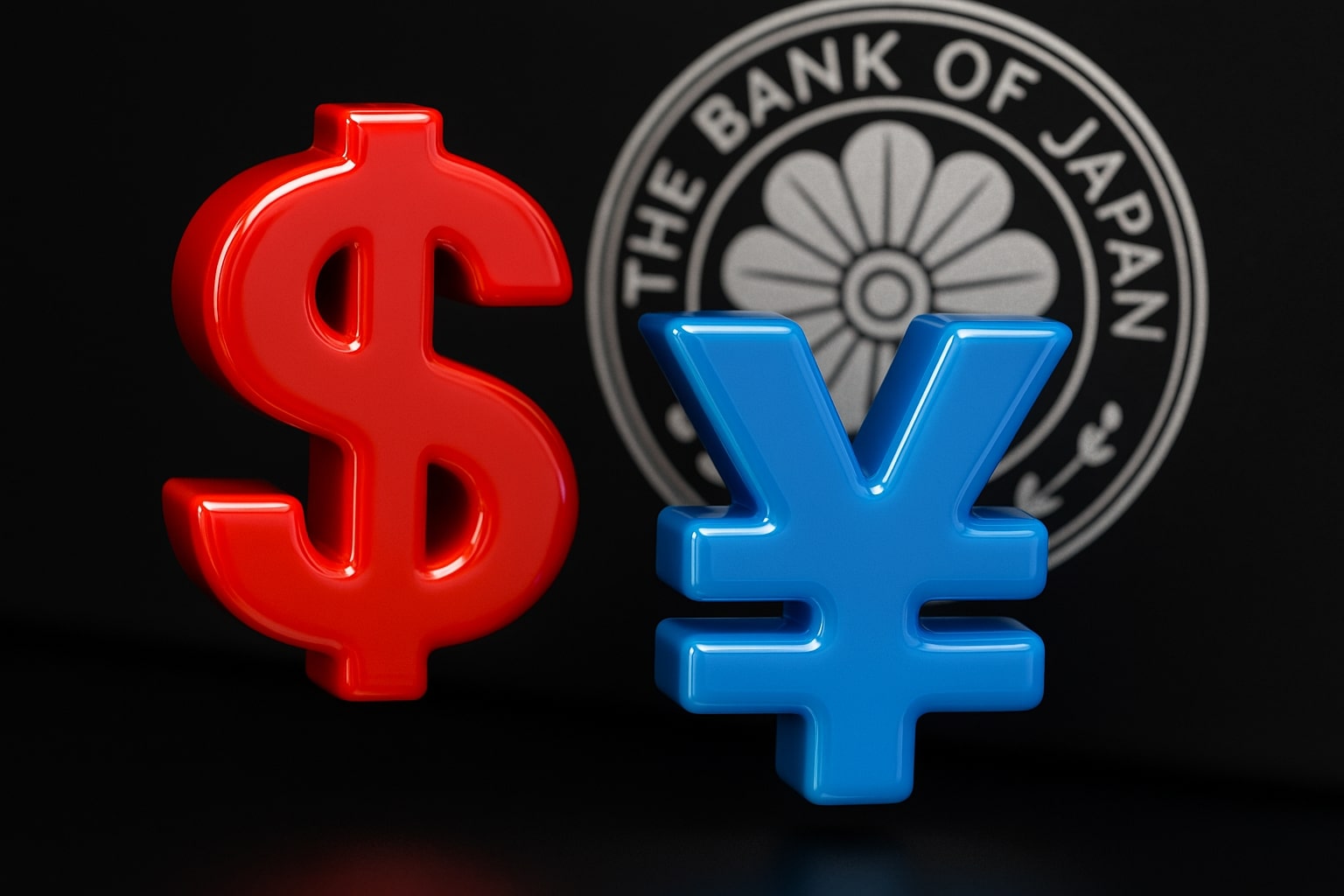
USD/JPY Price Forecast - Dollar to Yen Hits 150.63 After Japan’s Political Shake-Up
The yen weakens sharply after Sanae Takaichi’s pro-stimulus win shifts policy outlook, cutting BoJ hike odds from 68% to 41%. With U.S. 10-year yields near 4.15% and Japan’s at 0.5%, the 365 bps gap fuels carry trades — driving USD/JPY toward a possible breakout above 151.30 and eyeing 153.00 next | That's TradingNEWS
USD/JPY (Dollar/Yen) Surges Toward 151.00 as Japan’s Political Shift Sparks Renewed Yen Weakness
The USD/JPY pair continues its explosive rally, reaching 150.63 in early European trading, up over 1.9% from last week’s close. The surge follows Sanae Takaichi’s victory in Japan’s Liberal Democratic Party leadership race, setting her on track to become Japan’s first female prime minister. Her pro-stimulus and anti-tightening stance has sharply altered market expectations, sending the yen to its weakest level since early August. Traders who had priced in a 68% chance of a 25-basis-point Bank of Japan rate hike this month have slashed that probability to 41%, immediately triggering a broad selloff across the yen complex. Crosses such as GBP/JPY at 202.52, EUR/JPY at 176.03, and CHF/JPY at 188.85 reached record highs, highlighting the scale of yen liquidation.
Fiscal Activism vs. Monetary Discipline: Takaichi’s Policies Test BoJ Independence
Markets are now reassessing the balance between fiscal stimulus and monetary restraint in Japan. Takaichi’s history of calling the BoJ’s rate hikes “stupid” has stoked fears that her administration will pressure Governor Kazuo Ueda to slow or even halt the normalization path. Japan’s inflation remains at 2.7%, still above the BoJ’s 2% target, yet policymakers are divided on whether price growth is truly demand-driven or merely imported through a weaker yen. The BoJ’s cautious tightening had aimed to anchor inflation expectations while gradually reducing its ¥550 trillion balance sheet, but renewed government activism may derail those efforts. A government inclined toward heavy public spending could lift short-term GDP growth but worsen fiscal imbalances and undermine investor confidence in Japanese assets.
USD/JPY Technical Landscape: Multi-Decade Gap Hints at Breakout Potential
The 192-pip gap from Friday’s close to Monday’s open marks the largest single-session move for USD/JPY since May 1990, underscoring the scale of market reaction. Monday’s 1.9% gain was the strongest in nine weeks, carrying the pair to within 23 pips of its August peak at 151.28. Technical momentum indicators confirm strong upside bias: RSI remains near 68, below the overbought threshold, while MACD maintains bullish divergence. Immediate resistance sits at 151.00–151.30, a zone that, if broken, could propel USD/JPY toward 152.00 and 153.84, levels unseen since 2022. Support lies at 149.40, followed by 148.35, where the 100-day SMA provides structural backing. Traders view dips toward 149.00 as fresh entry opportunities, with price action continuing to respect the long-term uptrend channel established since April.
Global Macro Context: Dollar Strength Reinforced by Safe-Haven Flows and High Yield Differentials
The yen’s fall coincides with renewed strength in the U.S. dollar index (DXY), which rose 0.56% to 98.35, marking a rebound from last week’s lows despite the ongoing U.S. government shutdown. The DXY’s resilience reflects investors’ preference for the dollar as a short-term haven amid global uncertainty. Meanwhile, yield spreads continue to favor the greenback: the U.S. 10-year Treasury yield holds near 4.15%, compared to Japan’s 0.5% benchmark, maintaining an interest rate differential of over 365 basis points. This massive gap keeps the yen deeply entrenched in carry trade dynamics, with global investors borrowing in low-yielding yen to fund purchases of higher-yield assets.
Political Upheaval and the Return of the “Takaichi Trade”
Japan’s equity markets have mirrored the currency’s reaction. The Nikkei 225 surged to a record high, advancing over 3% as investors priced in continued fiscal stimulus and corporate profit expansion. Market parallels are being drawn to Shinzo Abe’s 2013–2020 Abenomics era, though today’s context differs sharply. Back then, the BoJ expanded its balance sheet from 30% to 100% of GDP, fueling a 25% drop in the trade-weighted yen. Now, with inflation already above target and Governor Ueda’s mandate to normalize policy, such an aggressive easing revival appears less feasible. Nonetheless, the perception of policy divergence — Japan loosening as the U.S. maintains high yields — keeps USD/JPY biased upward in the short term.
Speculative Positioning: COT Data Reveals Caught-Offside Yen Bulls
Commitment of Traders data highlights how fast sentiment has flipped. As of last Tuesday, large speculators and asset managers increased net-long yen exposure by 25,600 contracts, with non-commercial longs rising to 176,400. This positioning now sits underwater, as the yen’s sharp slide forced unwinding of bullish bets. The resulting short-covering accelerated the USD/JPY breakout above 150.00, reinforcing upward momentum. Asset managers’ net longs now total 77,834, suggesting further liquidation risk if the yen continues weakening.
Fed Policy and U.S. Macro Factors Add Complexity to USD/JPY Path
In the United States, the Federal Reserve’s dovish tone keeps markets volatile. According to CME FedWatch, there’s a 95% probability of a 25-basis-point rate cut in October and an 84% chance in December. While rate cuts would normally weigh on the dollar, their effect is offset by Japan’s ultra-low yields and political uncertainty. The Fed’s measured easing is viewed as risk management rather than full capitulation, which helps sustain global confidence in the dollar. Meanwhile, the U.S. government shutdown has stretched into its sixth consecutive day, injecting temporary volatility into Treasury markets but not enough to disrupt USD strength.
Institutional Forecasts: Diverging Outlooks Among Major Banks
Forecasts for USD/JPY are diverging sharply among institutions. Rabobank projects a three-month target of 145.00, assuming the BoJ delivers a rate hike by year-end to restore yen credibility. In contrast, short-term momentum analysts at major U.S. desks see potential retests of 153.00 if fiscal expansion proceeds unchecked. ING’s economic team emphasizes that this is “no 2013 Abenomics rerun,” citing structural inflation and a cautious BoJ governor. ING expects USD/JPY to settle near 145.00–147.00 by December, assuming the Fed proceeds with rate cuts and dollar yields compress. However, traders warn that if the BoJ delays normalization again, speculative flows could push USD/JPY toward 155.00, testing Tokyo’s tolerance for yen weakness.
Read More
-
Healthcare XLV ETF (NYSEARCA:XLV) Hits $155.29 as Eli Lilly, Johnson & Johnson, and AbbVie Fuel Sector Rally
03.12.2025 · TradingNEWS ArchiveStocks
-
XRPI and XRPR ETFs Rally as XRP Price Hits $2.19 and Institutional Inflows Approach $1B
03.12.2025 · TradingNEWS ArchiveCrypto
-
Natural Gas Price (NG=F) Nears $5.00 as Arctic Cold, Record LNG Exports, and Tight Supply Fuel a Bullish Winter Surge
03.12.2025 · TradingNEWS ArchiveCommodities
-
USD/JPY Price Forecast - Dollar to Yen Slips Toward ¥155.75 as BoJ Hawkish Turn and Fed Dovish Shift Narrow Yield Gap
03.12.2025 · TradingNEWS ArchiveForex
Market Psychology: Yen Loses Safe-Haven Appeal Amid Equity Euphoria
Risk appetite remains high globally, diminishing demand for the yen as a defensive asset. The S&P 500 and Nasdaq both printed fresh record highs, while Japan’s risk-sensitive Nikkei surged to all-time peaks. The rally in global equities, particularly in AI and semiconductor stocks, has diverted capital from low-yield assets, amplifying yen selling. The carry trade has re-emerged aggressively, with AUD/JPY up 2.1%, CAD/JPY up 1.8%, and NZD/JPY up 1.9%. This environment erodes the yen’s traditional haven function and reinforces structural weakness until policy convergence begins.
Short-Term Technical Outlook: Bulls Eye 151.28 and 152.00
Immediate resistance sits at 151.00, followed by the double-top high of 151.28 from August. A decisive break above that mark would confirm a bullish continuation pattern, opening the door to 152.00 and 153.84, last seen in February. Momentum remains firm, though RSI above 68 warns of possible short-term corrections toward 149.80. As long as USD/JPY holds above 149.00, the bias remains upward. Failure to defend 148.35 would indicate exhaustion and trigger profit-taking toward 147.80, but so far, no technical evidence points to reversal.
Economic Interplay: Japan’s Wages and Inflation Puzzle
Household spending in Japan rose 2.3% year-on-year in August, marking the fourth consecutive monthly increase and supporting the argument for moderate rate normalization. Yet, real wage growth remains stagnant, up only 0.6%, highlighting the challenge of achieving “demand-driven inflation.” Takaichi’s emphasis on boosting consumption through fiscal channels could widen the fiscal deficit but may not lift sustainable demand. The BoJ’s dual mandate of price stability and financial stability complicates its response — tightening too slowly risks yen depreciation, tightening too fast risks choking fragile wage growth.
Verdict: USD/JPY Maintains Bullish Bias — But Political Volatility Keeps Risks Elevated
After combining fiscal expansion signals, global yield differentials, and technical momentum, the USD/JPY outlook remains bullish. As long as the pair sustains above 149.00, traders will likely buy dips toward 149.40–149.80 targeting 151.30 in the near term and 153.00 in the medium term. Should the BoJ deliver a surprise hike later this month, temporary yen strength could push the pair back to 146.00–147.00, offering new buying opportunities. The data-driven bias is clear: monetary divergence favors the dollar, political volatility favors volatility traders, and fiscal expansion in Japan keeps yen bears firmly in control. The rating on USD/JPY (FX:USDJPY) stands at Buy, with near-term targets of 151.30 and 153.00, as market participants await Tokyo’s policy clarity under Japan’s new leadership.














